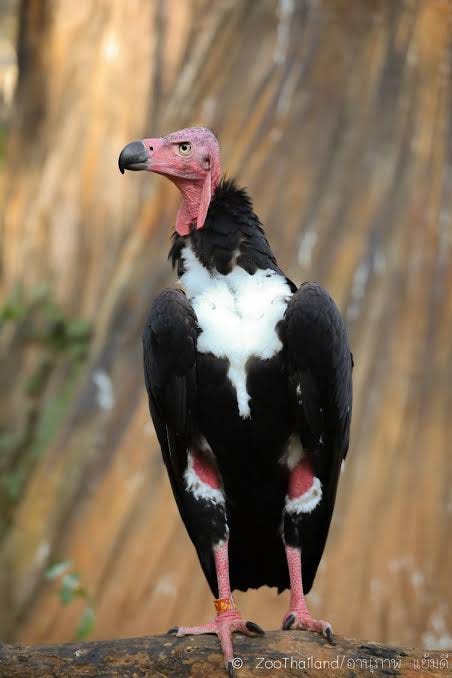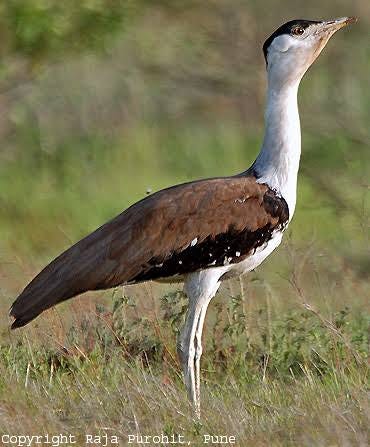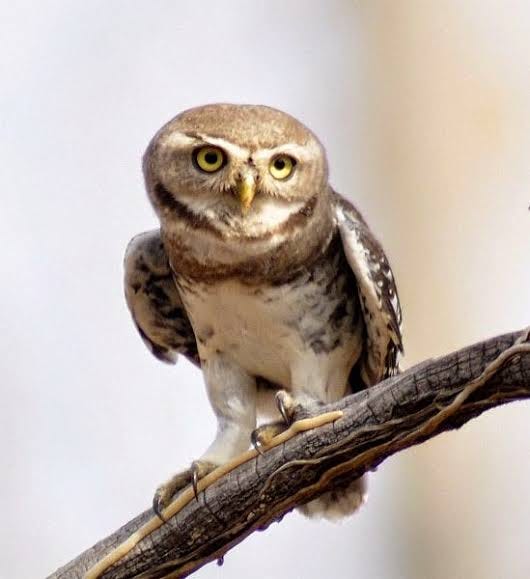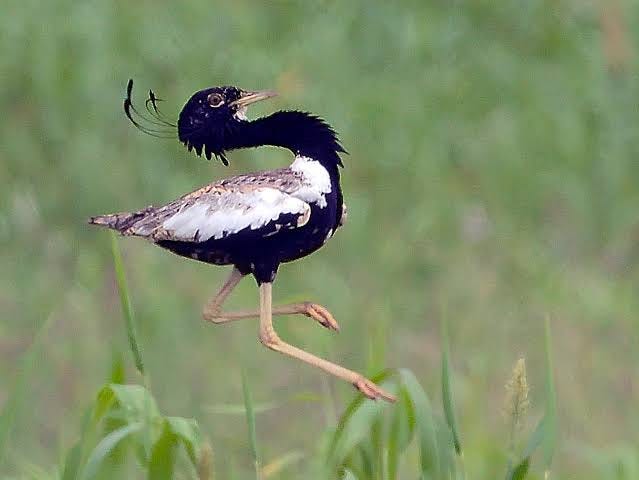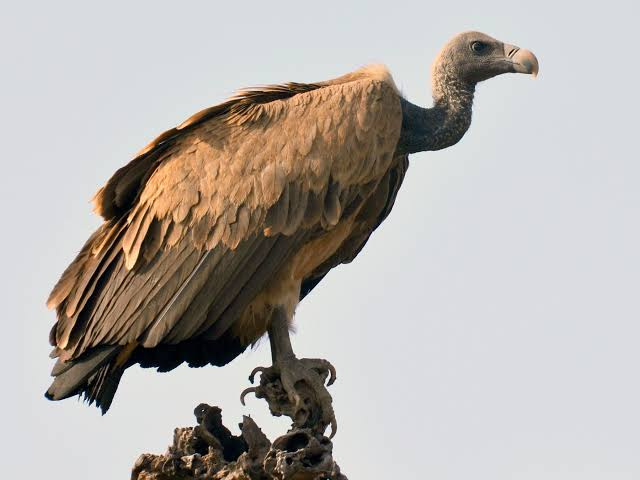5 Endangered Birds of India.
Here comes to your door a new article comprising Endangered species of Birds in India.
#1. Red Headed Vulture
The red-headed vulture (Sarcogyps calvus), also known as the Asian king vulture, Indian black vulture or Pondicherry vulture,[2] is an Old World vulture mainly found in the Indian subcontinent, with small disjunct populations in some parts of Southeast Asia.This gaudy-faced vulture was historically abundant, range widely across the Indian subcontinent, and also eastwards to south-central and south-eastern Asia, extending from India to Singapore. Today the range of the red-headed vulture is localized primarily to northern India.
The red-headed vulture used to be declining, but only slowly; in 2004 the species was uplisted to near threatened from least concern by the IUCN. The widespread use of the NSAID diclofenac in veterinary medicine in India has caused its population to collapse in recent years, however. Diclofenac is a compound now known to be extremely poisonous to vultures. The red-headed vulture population has essentially halved every other year since the late 1990s, and what once was a plentiful species numbering in the hundreds of thousands has come dangerously close to extinction in less than two decades. Consequently, it was uplisted to critically endangered in the 2007 IUCN Red List.[1]
#2. GREAT Indian Bastard
The Desert National Park in Jaisalmer, Rajasthan is famous for the Great Indian Bustard. The Great Indian Bustard Sanctuary.
The great Indian bustard or Indian bustard, is a bustard found on the Indian subcontinent. A large bird with a horizontal body and long bare legs, giving it an ostrich like appearance, this bird is among the heaviest of the flying birds.
Scientific name: Ardeotis nigriceps
How many Great Indian Bustard are left?
150 Great Indian Bustard
Only 150 Great Indian Bustard are left, with the maximum number in Jaisalmer.( Accord to a report)
Once common on the dry plains of the Indian subcontinent, as few as 150 individuals were estimated to survive in 2018 (reduced from an estimated 250 individuals in 2011 ) and the species is critically endangered by hunting and loss of its habitat, which consists of large expanses of dry grassland and scrub.
These birds are often found associated in the same habitat as blackbuck. It is protected under Wildlife Protection Act 1972 of India.
The great Indian bustard is omnivorous. Apparently, insects, consisting mainly of Orthoptera, but also beetles,( particularly Mylabris sp.) are preferred in the diet.
They drink water if it is available and will sometimes sit down to drink or suck water followed by raising up their heads at an angle. When threatened, hens are said to carry young chicks under the wing.
#3. Forest Owlet.
Forest Owlet is the highly endangered species of the typical owls family and endemic to forests of central India.It is listed as Endangered on the IUCN Red List since 2018, as the population is estimated at less than 1,000 mature individuals.
Scientific name: Athene blewitti
It is a member of the typical owl family Strigidae, and was first described in 1873. As it was not sighted after 1884, it was considered extinct for many years.[2] In 1997, it was rediscovered by Pamela Rasmussen. Searches in the locality mentioned on the label of the last collected specimen failed, and it turned out that the specimen had been stolen from the British Museum by Richard Meinertzhagen and resubmitted with a label bearing false locality information.
The forest owlet typically hunts from perches where it sits still and waits for prey. When perched, it flicks its tail from side to side rapidly and more excitedly when it chases prey. Lizards and skinks constitute nearly 60% of its prey, rodents 15%, birds 2% and the remaining invertebrates and frogs.
The forest owlet appears to be strongly diurnal although not very active after 10 in the morning, often hunting during daytime. On cold winter mornings, it basks on top of tall trees.
Filial cannibalism by males has been observed.
#4. Bengal Florican
Why are Bengal florican endangered?
Both populations are in decline and threatened by habitat loss through drainage, conversion to agricultural land and plantations, the invasion of alien species, and damn construction.
How can we save Bengal florican?
“Re-routing the power line in areas where it would otherwise go close to the sites where the Bengal Floricans breed is the most effective way of preventing or reducing the possibility of the Bengal Floricans being killed,” said Simon Mahood, WCS Cambodia's Senior Technical Advisor.
How many Bengal Florican are there in India?
India has nearly 400 Bengal floricans (2017) but the species has already become extinct in Katerniaghat, Kishanpur in Uttar Pradesh, Bornadi and Sonai-Rupai Wildlife Sanctuaries and Nameri National Park in Assam, the IUCN said.
The Bengal florican has two disjunct populations. One occurs from Uttar Pradesh through the Terai of Nepal to Assam and Arunachal Pradesh in India, and historically to Bangladesh. The other occurs in Cambodia and perhaps adjacent southern Vietnam. It is mostly resident on its breeding grounds; around Tonlé Sap in Cambodia however, the birds use grasslands near the lake to breed, and move away from the water in the wet season when the breeding grounds are flooded. Similarly, the Terai population seems to move to warmer lowland locations in winter. Migrations are not long-distance, however, and probably are restricted to a few dozen kilometers.
Bengal floricans live in open tall grassland habitats with scattered bushes. The most important grass species are satintails Imperata, in particular Cogongrass I. cylindrical), sugarcane (Saccharum, in particular Kans Grass S. spontaneous), munj grass (Tripidium bengalense), as well as Desmostachya bipinnate. The birds are usually encountered in the early mornings and evenings and are most easily spotted in the breeding season from March to August, which is when most censuses of the population are conducted. Particular between March and May, when they give their stunning courtship display, males are far more conspicuous than the cryptically-coloured females, which moreover prefer high grassland rich in sugarcane.
#5. Indian Vulture
The Indian vulture is an Old World vulture native to India, Pakistan and Nepal. It has been listed as Critically Endangered on the IUCN Red List since 2002, as the population severely declined.
The Indian vulture (Gyps indicus)
What is the sad truth about vultures?
It is quite an alarming statement, but it is the sad truth about the vultures of India. Even today, four of the nine vulture species in India fall under the 'Critically Endangered' category in the IUCN Red List of Threatened Species.
Are vultures friendly to humans?
Despite their intimidating presence, vultures are pretty harmless. They have no incentive to attack humans and they lack the physical attributes that could pose a threat. Although they are carnivorous, most vultures feed only on animals that are already dead.
What are vultures attracted to?
New World vultures are frequently attracted to mercaptan, a gas that rotting corpses release and that they find very appealing. Turkey vultures (Cathartes aura) are a New World species that has even proven useful in notifying people of natural gas spills, simply by hovering persistently over them.
The Indian vulture breeds mainly on cliffs in South and Central India, but is known to use trees to nest in Rajasthan. It may also breed on high human-made structures, like the Chaturbhuj Temple. Like other vultures, it is a scavenger, feeding mostly from carcasses, which it finds by soaring over savannah and around human habitation. It often congregates in flocks.
Thankyou for reading till the end.
With love & gratitude,
RD.
Meet you super soon.
Comment below your suggestions on which you would love to read.




